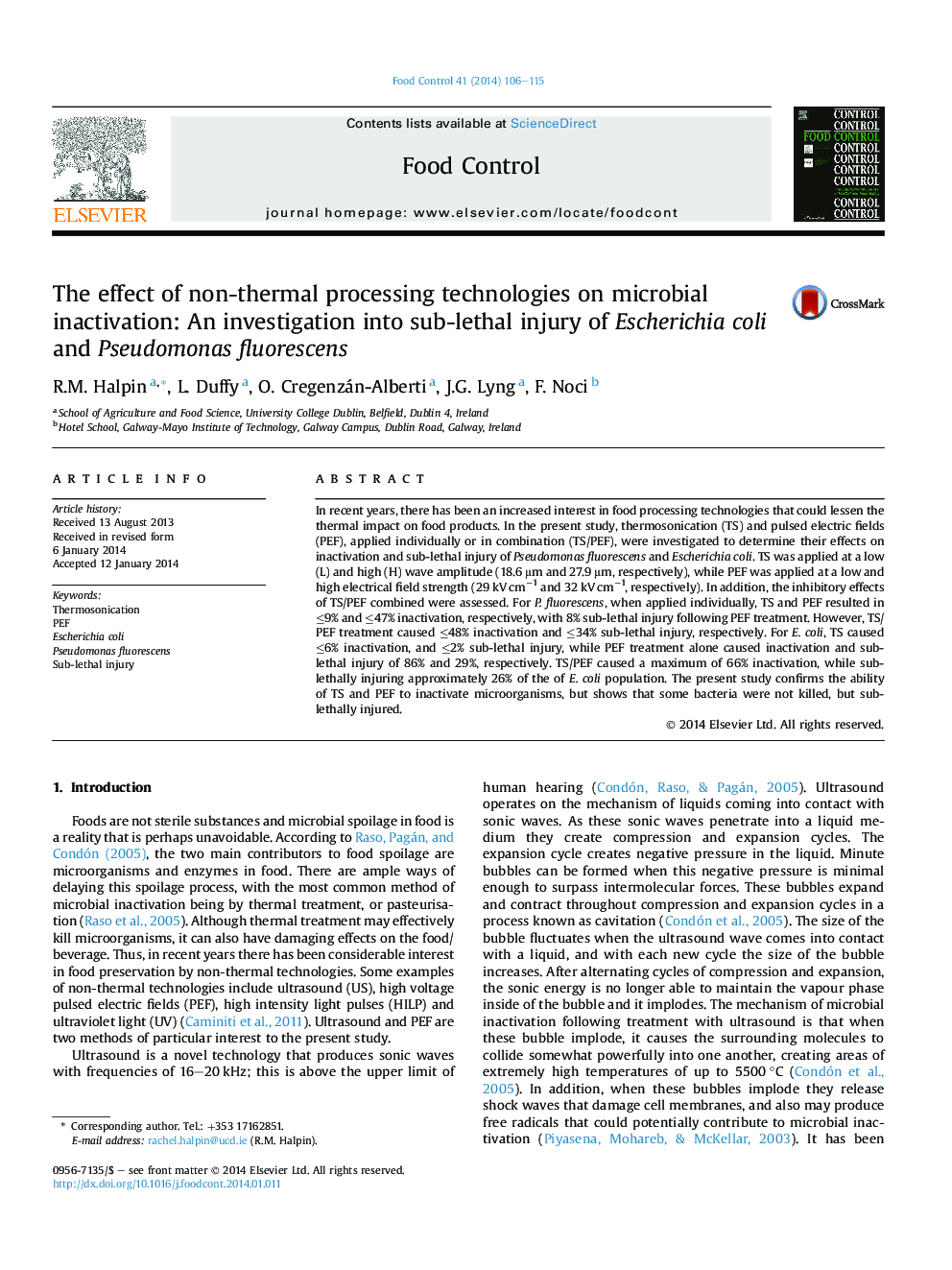| Article ID | Journal | Published Year | Pages | File Type |
|---|---|---|---|---|
| 6391927 | Food Control | 2014 | 10 Pages |
â¢Suspensions of E. coli and P. fluorescens were processed with thermosonication and pulsed electric fields.â¢These treatments were applied individually (TS or PEF alone) or in combination (TS/PEF).â¢The quantity of bacteria (i) killed or (ii) sub-lethally injured was determined.â¢PEF was found to have a greater ability to inactivate both E. coli and P. fluorescens than TS.â¢Substantial levels of sub-lethal injury were observed following treatment with TS/PEF.
In recent years, there has been an increased interest in food processing technologies that could lessen the thermal impact on food products. In the present study, thermosonication (TS) and pulsed electric fields (PEF), applied individually or in combination (TS/PEF), were investigated to determine their effects on inactivation and sub-lethal injury of Pseudomonas fluorescens and Escherichia coli. TS was applied at a low (L) and high (H) wave amplitude (18.6 μm and 27.9 μm, respectively), while PEF was applied at a low and high electrical field strength (29 kV cmâ1 and 32 kV cmâ1, respectively). In addition, the inhibitory effects of TS/PEF combined were assessed. For P. fluorescens, when applied individually, TS and PEF resulted in â¤9% and â¤47% inactivation, respectively, with 8% sub-lethal injury following PEF treatment. However, TS/PEF treatment caused â¤48% inactivation and â¤34% sub-lethal injury, respectively. For E. coli, TS caused â¤6% inactivation, and â¤2% sub-lethal injury, while PEF treatment alone caused inactivation and sub-lethal injury of 86% and 29%, respectively. TS/PEF caused a maximum of 66% inactivation, while sub-lethally injuring approximately 26% of the of E. coli population. The present study confirms the ability of TS and PEF to inactivate microorganisms, but shows that some bacteria were not killed, but sub-lethally injured.
